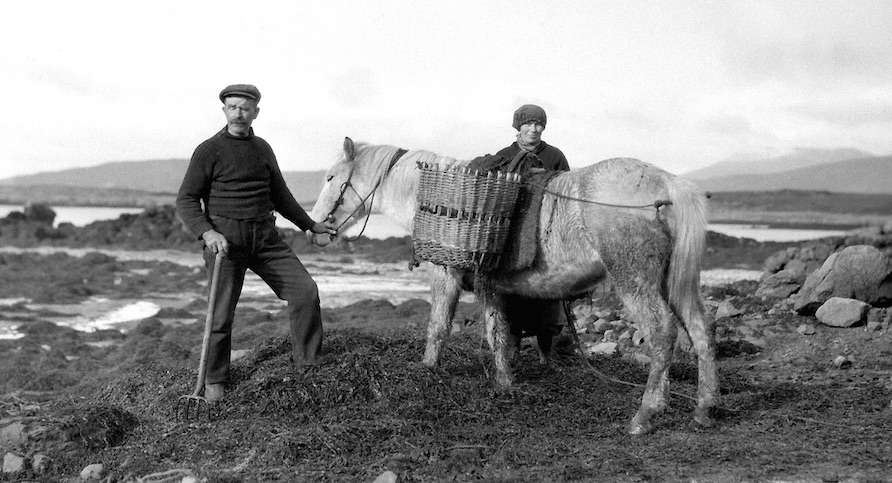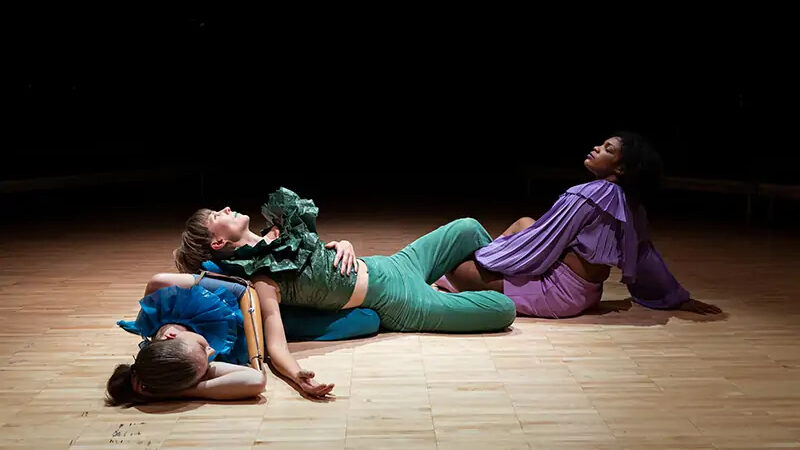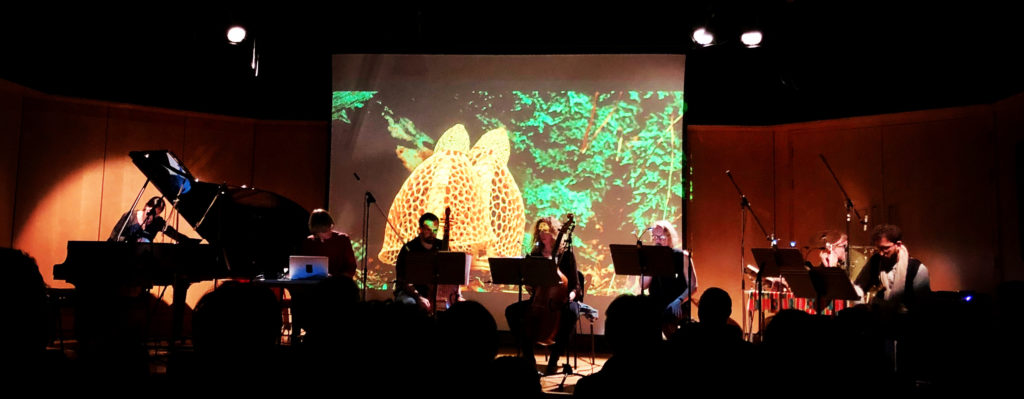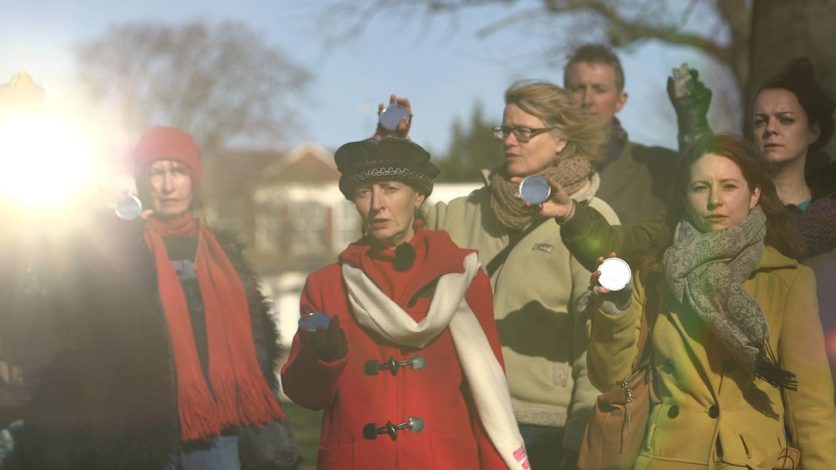Index
- Machair & Dùthchas (2022-24) acousmatic geolocative soundwalks.
- Orasaigh (2023) acousmatic geolocative soundwalk.
- Carareretetatakakekerers (2021) sound design and acoustic compositions for contemporary dance
- The Metalization of a Dream (2019-20) for open instrumentation and electronics
- The Cries of Columbia Road (2017-2020) sound installation & book chapter
- The Cries of Peckham Rye (2015) electroacoustic sound work and film soundtrack
- From Surface to Surface (2014) acousmatic soundwalk
- Resume (opens in new window)
Machair (2022) & Dùthchas (2024)

A series of place-based acousmatic geolocative soundwalks that draw upon the natural environment, heritage and culture of Uist. The works combine original compositions, environmental field recordings, and the creative reimagining of archive sound recordings sourced from the University of Edinburgh School of Scottish Studies. Mapped to four locations on Uist, these works are available on the free geolocative audio app Echoes. Commissioned by Taigh Chearsabhagh Museum and Arts Centre with funds from the Arts and Humanities Research Council, Research England, and Visit Scotland. Machair (35 minutes) launched in September 2022, and Dùthchas (60 minutes) will launch in Spring 2024.
Since its launch, Machair has been adapted for radio broadcast (Resonance FM & Radiophrenia), concert performance (GLEAM Festival), and nominated for an Ivor Novello Award for Best Sound Art. Press coverage of the work included BBC Alba, and Press & Journal. In 2024, the soundwalk will feature in the international music festival programme, Nordic Music Days. A stereo mix of Machair is provided below.
These outputs, along with Orasaigh, will be cited as a ‘proof concept’ for a large-scale interdisciplinary project investigating the use of geolocative soundwalks as a means to provide culture-led placemaking that opens up new avenues to investigate place, identity and community through sound. By engaging communities in the act of listening, the project aims to highlight the role of place in generating local identities, connecting people to their natural environment, and uniting communities in shared appreciation of their localities, culture and heritage. The project will be scaled up across the Western Isles in 2025 through Leverhulme Research Project Grant, with additional funds sought from Creative Scotland and PRS Foundation. Mid-term outputs and impact activities include a symposium, journal articles, album release, concerts and public engagement events. KE activity includes a partnership with international headphone manufacturer SHOKZ, exploring the potential application of bone-conduction headphones in the public arts and heritage sectors.
Orasaigh (2023)

A geolocative sound walk setting of Steve Ely’s eponymous poem on the South Uist tidal island of Orasaigh. Ely’s visionary poem, whilst always remaining anchored in the island, roams widely, exploring a range of themes related to Uist and the wider world – sea level rise, the crisis of the ‘sixth extinction’, history, culture, politics, conflict and class.
Mapped to a coastal walk around the island, this binaural work is structured around Ely’s narration of the poem with original compositions and soundscapes captured on location in surround sound. This work was commissioned by Taigh Chearsabhagh Museum & Arts Centre and is scheduled to be broadcast on BBC Radio 3 series Between the Ears in 2024 (45 minutes).
Carareretetatakakekerers (2021)

80-minute electroacoustic composition for contemporary dance, commissioned by Normal Conditions / Nicola Conibere with funds from the Arts Council of England. Premiered at Sadler’s Wells, 14 October 2021.
Programme note: Embracing interdependence and practices of care, Carareretetatakakekerers asks when and why bodies are thought to exceed themselves. What futures or planes of relationships are possible when we recognise that we hold each other up? After all, self-reliance can be so austere.
Created through a process including COVID infections, pings, remote rehearsals and masked dancing, Carareretetatakakekerers is presented by Normal Conditions – performed and co-created by Annie Hanauer, Helka Kaski and Ming with original sound composition by Duncan MacLeod, costumes by Lucille Acevedo-Jones, lighting by Marty Langthorne, dramaturgy by Martin Hargreaves, promotional designs by Ted Young-Ing and choreographed/conceived by Nic Conibere. same time. You’re welcome to watch.
Reviews in Dance Art Journal, and Writing about dance Excerpts from the work are provided as a playlist below.
The Metalization of a Dream (2019-2020)

The Metalization of a Dream is an open-form sound work that draws upon the dada and surrealist-inspired collages of the visual artist Eduardo Paolozzi. As with Paolozzi’s practice, this work montages ‘found objects’ such as John Taverner’s In Nomine and the writings of Gertrude Stein that are reimagined and juxtaposed with composed and indeterminate materials to form an equivocal sound world. This post-structural approach employs John Cage’s notion of the coexistence of dissimilars, where harmoniously blended elements are eschewed in favour of sonic juxtapositions ‘that fuse in the ear of the listener.’ This non-linear collaging of materials drawn from different spatiotemporal situations reveals an Otherness that looks to access the subconscious, political, and absurd
Commissioned by Galvanize Ensemble. Premiered by Galvanize Ensemble and Fretwork at Newcastle Lit & Phil in February 2019 with funds from The RVW Trust, Arts Council of England, Britten Pears Foundation, and PRS Foundation (8-30 minutes in duration). An expanded version of the work was premiered in January 2021, as part of SOUND Music Festival, Aberdeen. To date, additional performances include Café OTO, City University Concert Series and several streamed events, namely nonclassical, NottNOISE New Music Marathon, and Lit & Phil Online. In November 2020, the work was the focus of a 1-hour radio broadcast on Resonance FM, that featured a pre-recorded performance of the work and interview.
Cage, J. (1961). Silence. Middletown, Conn.: Wesleyan University Press.
The Cries of Columbia Road (2017)
A 9-minute acousmatic composition premiered at Whitechapel Gallery as part of The Sound of Memory Symposium: Sound-track/Sound-scape.
This work forms part of an ongoing series of electroacoustic compositions that draw upon the urban
The Cries of Peckham Rye (2015)

The Cries of Peckham Rye (2015) is a 12-minute acousmatic composition. This output was commissioned by artist and filmmaker Sarah Turner to feature in her film Public House with funds from the Arts Council of England and Film London. The composition was developed over six months with text written by the celebrated poet Jane Yeh and choral elements performed by Dulwich Folk Choir. Although commissioned for film, this output is a standalone electroacoustic composition written for quadraphonic sound.
Public House tells the story of the Ivy House Pub in Peckham Rye. Slated to be sold to property developers in 2012, the local community triumphantly came together to save the pub from closure. Made in collaboration with the local community, the film features their voices, poems and performances, as well as key moments in the community takeover which led the Ivy House to become one of the UK’s first co-operatively owned pubs and the country’s first ‘asset of community value’ under the 2010 Localism Act.
The Cries of Peckham Rye is a reimagining of a vision recounted by the poet and artist William Blake, who as a child saw a tree on Peckham Rye ‘filled with angels, bright angelic wings bespangling every bough with stars’. Although heard throughout the film, this output underpins an extended climactic sequence in which the Ivy House community takes to Peckham Rye park in an act that Turner describes as ‘a communal celebration of human creativity and resilience’.
The film was selected for premiere at the 2015 British Film Institute (BFI) London Film Festival and was nominated for the BFI Grierson Award in 2016. In 2017 the film toured over 20 film festivals across the UK and exhibited at key contemporary art galleries, including FACT Liverpool and Centre for Contemporary Art Glasgow. Elsewhere, the composition was twice broadcast as part of the BBC Radio 4 documentary ‘A Vision on Peckham Rye’ presented by Levi Roots in 2016.
Reviews:
‘The performing body provides the medium through which cinematic experiment with multi-layered sound is projected towards the audience, a connection point that allows us to feel the film deeply. [The] combination of the choreographic and choral offer a dazzlingly unique form in which to make the collective cinematic’. Mayer, S. (2016). Bodies and film. Sight & Sound Magazine. November. 77.
‘The choral heard earlier in the film, bursts forth. Extracts of a poem (after William Blake) written by Jane Yeh are sung and whispered by the assembly: “Glitter in the trees” … “Stars in the dark, our collective dreams.” A completed invocation’. Salmon, Y. (2019). The Third Space: Sarah Turner’s Public House. LUX [online]. Available at: https://lux.org.uk/the-third-space-sarah-turners-public-house
From Surface to Surface (2014)
A 13-minute binaural acousmatic composition, commissioned by Tate Modern, London. Audio recording: https://soundcloud.com/duncan-macleod/sets/from-surface-to-surface
This work forms part of Tate’s Sonic Trails series, an initiative that explores a wider engagement with live arts where composers and sound artists are commissioned to respond to an artwork of their choosing from the gallery’s permanent collection. In this work, I respond to Susumu Koshimizu’s sculpture by the same title that is on display at Tate Modern, London. The resultant composition mirrors the sculpture with 14 miniatures, each ranging between 30 seconds and a minute in duration, with each miniature responding to a corresponding plank of the sculpture. To date, the sound work has attracted several thousand audience members and continues to be presented as part of the Gallery’s ongoing live art programme. In terms of wider significance, the work forms part of a burgeoning practice, namely sound and music performance in galleries. Moreover, the work contributes to an emergent field of practice, namely the creative application of spatial music through the use of binaural audio in which sound can be presented in a three-dimensional space.
